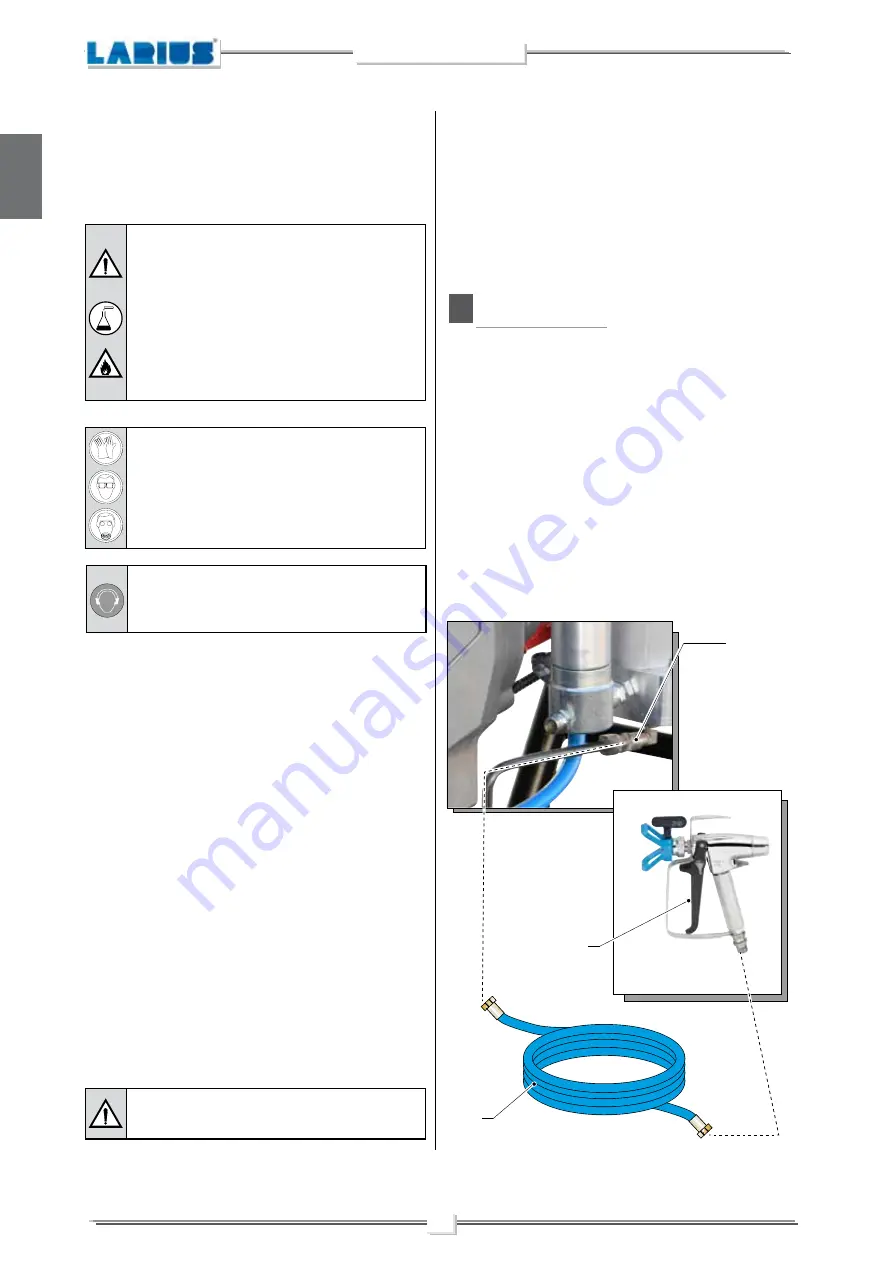
ZEUS
10
English
F
Electrical safety precautions
• Check the switch is on the “OFF” position before connecting
the cable to the mains.
•
Never carry a plugged-in equipment.
•
Disconnect the equipment before storing it and before perfor-
ming any maintenance operation or replacing of accessories.
•
Do not carry the equipment neither unplug it by pulling the
electric cable.
•
Protect the cable from heat, oil and sharp edges.
•
When the tool is used outdoors, use only an extension cable
suited for outdoor use and so marked.
•
Take care when the pumping rod is moving.
Stop the machine whenever someone is within its vicinity.
•
Repairs of the electrical equipment should only be carried
out by skilled personnel, otherwise considerable danger to
the user may result.
IF THE PRODUCT TO BE USED IS TOXIC, AVOID IN-
HALATION AND CONTACT BY USING PROTECTION
GLOVES, GOGGLES AND PROPER FACE SHIELDS.
TAKE PROPER SAFETY MEASURES FOR THE
PROTECTION OF HEARING IN CASE OF WORK
NEAR THE PLANT.
Never attempt to tamper with the calibre of in-
struments.
SETTING-UP
CONNECTION OF THE FLEXIBLE HOSE TO THE GUN
• Connect the high pressure flexible hose (
F1
) to the pump
(
F2
) and to the gun (
F3
), ensuring to tighten the fittings (
the
use of two wrenches is suggested
).
NEVER
use sealants on fittings’ threads.
It is
ADVISED
to mount a high pressure manometer at the
pump outlet
(see on page “Accessories”)
to read the product
pressure.
• It is recommended to use the hose provided with the standard
kit (
ref.18036
).
NEVER
use a damaged or a repaired flexible hose.
•
NEVER SPRAY OVER FLAMMABLE PRODUCTS OR SOL-
VENTS IN CLOSED PLACES.
•
NEVER USE THE TOOLING IN PRESENCE OF POTEN-
TIALLY EXPLOSIVE GAS.
Always check the product is compatible with the
materials composing the equipment
(pump, spray
gun, flexible hose and accessories)
with which it
can come into contact. Never use paints or sol-
vents containing halogen hydrocarbons
(as the
methylene chloride)
.
If these products come into contact with aluminium
parts can provoke dangerous chemical reactions
with risk of corrosion and explosion.
F2
F1
F3













































